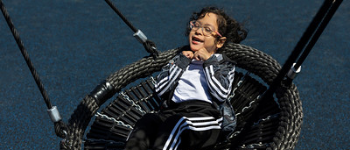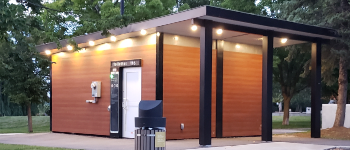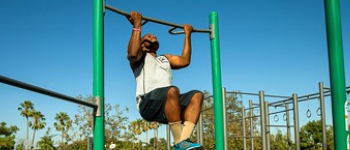Playground Safety Guide
Apr 10







Nov 08
Today, safety is a crucial factor to consider when designing a playground. However, that was not always the case. Looking throughout the history of different playground equipment can highlight how far playground safety has come — and why these improvements were necessary.
Let’s look at the changes to playground safety over the years and how you can design a safer playground for your community.
The Consumer Product Safety Commission (CPSC) published the first Public Safety Handbook in 1981 under the name “A Handbook for Public Safety” after the public took an interest in playground safety starting in the 70s. Before that, most playgrounds were built on asphalt, gravel, or other hard surfaces, with equipment made of steel, chains, and other tough materials. From the turn of the century to the early 80s, these kinds of playgrounds were fairly common and resulted in a few injuries from time to time.
Think back to your childhood. You probably experienced playing on playground equipment that was slightly questionable in its safety in one aspect or another. Thankfully, after the CSPC stepped in during the 80s, playground safety became more mainstream for playgrounds and playground equipment. You may still see a metal slide or real tire swing in a playground somewhere, but as safe play continues to be a popular topic, these may become fewer and farther between.
Playgrounds and outdoor play spaces offer kids fresh air, exercise, and the chance to interact with their family, friends, and the larger community. Having a safe environment to do it is important so they can develop the skills that play provides, such as improved cognitive, physical, social, and emotional skills without the risk of serious injury.
According to the CPSC, more than 200,000 children are seen in emergency rooms due to a playground accident each year. An injury can prevent a kid from getting outside and being active. This has consequences for their physical and mental health and could prevent them from wanting to return to a playground because they associate it with a harmful experience. If that happens, then they won’t be able to work on all the skills listed above. A safe playground ensures that they’re continually getting outside and reaping the benefits of structured play opportunities.
So, what makes a safe playground? There are several different things that make up one, including:
Having a parent, family member, or other trusted adult present when a child is on a playground is key. A lot of injuries can occur when an adult has their back turned, so make sure children can be seen at all times, even if they’re in a tunnel or similar crawl space.
Playgrounds invite kids of all different ages and abilities to get outside. For a safe playground, be sure to offer equipment that’s suitable for several age ranges, such as toddlers, young children, and even teenagers. A play area for a toddler shouldn't have equipment over two or so feet and equipment for older children shouldn't be higher than eight feet. Posting a sign that shows the age-range in different areas of the playground can help prevent accidents.
Inclusive playground equipment that allows everyone, regardless of ability, to play should also be considered. This kind of equipment is built with safety in mind, typically using non-toxic plastic materials and other soft surfaces. Some pieces of inclusive equipment also encourage family members to join the fun, further encouraging adult supervision.
It’s easy for kids to forget to be careful when they’re having a blast on the playground. With best-in-class safety surfacing, you won’t have to worry about injuries should they fall. In fact, the best way to minimize damage caused by a fall is to have safety surfacings such as engineered wood fiber, recycled rubber mulch, poured-in-place rubber, or synthetic turf.
These options offer good impact absorption compared to the surfacing of the past — concrete, asphalt, and gravel. For example, poured-in rubber has a fall height rating of 16 feet, letting kids push the boundaries of play while knowing they’re safe in the event of an accident.
When designing a playground, safety should be your first and greatest priority. It starts with the foundation and continues to the different components that make up your space. Playgrounds with equipment made out of durable, rounded safe materials like plastic that target specific ages and have soft landings throughout the space are go-to's.
But we understand that you may have many questions if you're just beginning to think about building your safe playground. Our team is happy to help whenever you need it.